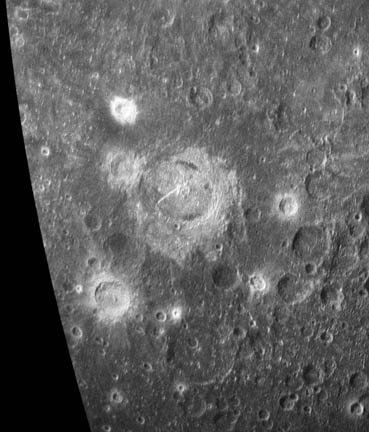Difference between revisions of "May 26, 2005"
| (5 intermediate revisions by the same user not shown) | |||
| Line 1: | Line 1: | ||
__NOTOC__ | __NOTOC__ | ||
=A New Kind of DHC= | =A New Kind of DHC= | ||
| + | <!-- Start of content --> | ||
<table width="85%" border="0" align="center" cellpadding="6" cellspacing="2"> | <table width="85%" border="0" align="center" cellpadding="6" cellspacing="2"> | ||
<tr> | <tr> | ||
| Line 28: | Line 29: | ||
<br>Rukl Plate 59 | <br>Rukl Plate 59 | ||
</p> | </p> | ||
| − | <p | + | <p><b>Yesterday's LPOD:</b> [[May 25, 2005|An IR Strip Across a Kipuka]] </p> |
| + | <p><b>Tomorrow's LPOD:</b> [[May 27, 2005|Is It Love or a Sinus Infection?]] </p> | ||
</tr> | </tr> | ||
</table> | </table> | ||
| Line 39: | Line 41: | ||
<p align="center" class="main_titles"><b>Author & Editor:</b><br> | <p align="center" class="main_titles"><b>Author & Editor:</b><br> | ||
[mailto:tychocrater@yahoo.com Charles A. Wood]</p> | [mailto:tychocrater@yahoo.com Charles A. Wood]</p> | ||
| − | < | + | <!-- Cleanup of credits --> |
| − | + | <!-- Cleanup of credits --> | |
| − | < | + | <!-- Cleanup of credits --> |
| − | + | <!-- Cleanup of credits --> | |
| − | + | <!-- Cleanup of credits --> | |
| − | < | + | <!-- Cleanup of credits --> |
| − | < | + | <!-- Cleanup of credits --> |
| − | + | <!-- Cleanup of credits --> | |
| − | < | + | <!-- Cleanup of credits --> |
| − | + | <!-- Cleanup of credits --> | |
</td></tr> | </td></tr> | ||
</table> | </table> | ||
<p> </p> | <p> </p> | ||
| − | ---- | + | <!-- End of content --> |
| − | + | {{wiki/ArticleFooter}} | |
| − | |||
Latest revision as of 14:16, 15 March 2015
A New Kind of DHC
Image Credit: Rebecca Ghent |
|
A New Kind of DHC Optical dark halo craters (DHC) are typically small impact craters that excavated into buried mare material, or they are volcanoes that ejected ash. Radar studies have resulted in the discovery of a new type of DHC: radar dark halo craters (RDHC). This radar image of Petavius and surrounding area beautifully illustrates a RDHC. The rim and near ejecta of Petavius (and a few other nearby) craters are bright, which in these 70 cm wavelength radar images means rough. That makes sense the radar is bouncing off the small boulders in the ejecta deposits. But beyond the bright ejecta is a very symmetric radar dark zone. The dark area is where there is a deficiency of 70 cm size boulders and rocks - a smooth area. Since 70 cm radar penetrates as much as 8 m in highland regolith, the smoothness is within a near surface volume, rather than just being due to a lack of boulders at the surface. I wonder if the smooth area beyond the immediate ejecta debris is due to the surface being swept by radial blasts (or winds) from the impact that formed Petavius. The bright crater (Petavius B) NNW of Petavius also seems to have a partial dark zone to its SW and perhaps to its SE. The lack of a halo to the N is consistent with my theory of ejecta wind sweeping aways rocks, for Petavius B is an oblique impact crater, with the projectile coming from the N! A final observation: the two lunar pyroclastic deposits (LPD) on the northern and southern edges of Petavius floor show up well as dark (smooth) material. But notice another tiny dark patch near the eastern wall - is that another LPD? Related Links: Yesterday's LPOD: An IR Strip Across a Kipuka Tomorrow's LPOD: Is It Love or a Sinus Infection? |
|
Author & Editor: |
COMMENTS?
Register, Log in, and join in the comments.




